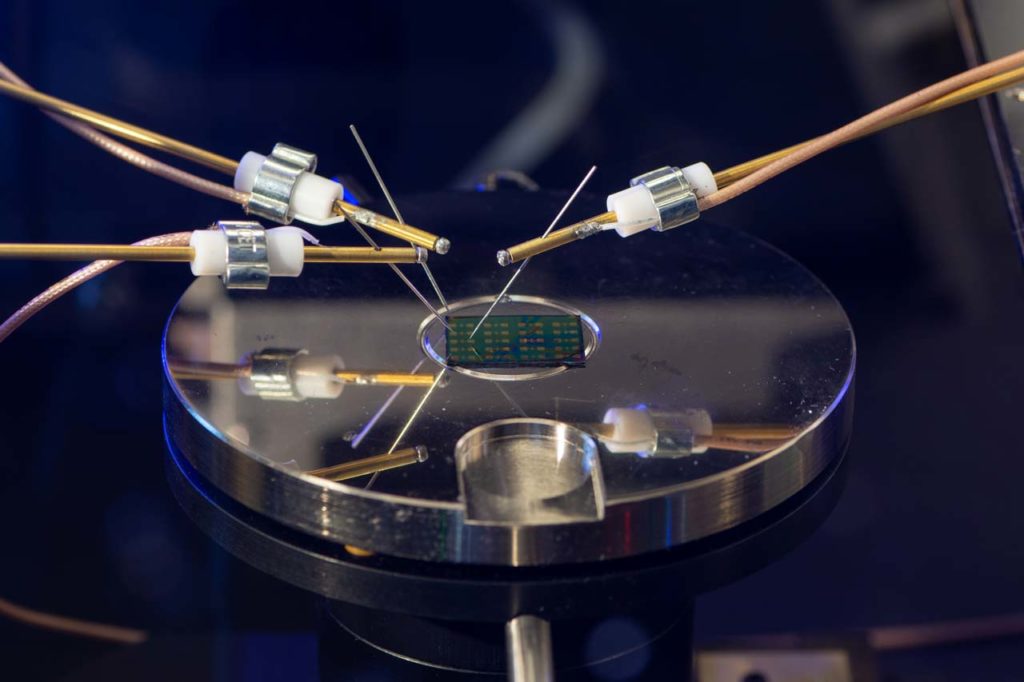Device Fabrication & Engineering
The benefits of organic electronics are numerous: ease of fabrication, low-cost, on-demand printing, mechanical flexibility, transparency, reliability, production processes which are significantly more resource-friendly and energy-efficient, scalability, seamless complementary metal–oxide–semiconductor (CMOS) and heterogeneous integration, and tolerance toward structural defects and disorder.
These attributes, combined with flexibility in materials and device design open opportunities not available with inorganics, and contrast with the extreme levels of order (low entropy), high temperatures, and painstaking growth requirements of conventional semiconductors.

Our molecular design strategies are overcoming issues associated with other extended aromatic systems such as synthetic inaccessibility, modularity, chemical instability, processability, low efficiencies of charge separation, and photon energy lost by internal dissipation.
We integrate these materials within solution-processed photodetector, phototransistor, and solar cell devices, which serve as the basic building blocks for more advanced optoelectronic technologies.
Controlling electronic structure enables new functions, properties, and/or multifunctional activities. We are currently exploring the utility of open-shell organic semiconductors for various applications such as photonics, nonlinear optics, conductive coatings, thermoelectrics, energy storage, organic magnetism, spintronics, quantum technologies, etc.
Core instrumentation includes a glovebox integrated EvoVac PVD system with thermal evaporation, electron beam evaporation, and RF and DC sputtering. Characterization capabilities (including diode, transistor, photodetector, and solar cell) that extend into the IR, provide tools to study new detection and transduction materials and engineer state of the art devices.
A cryogen-free AC/DC Superconducting Quantum Interference Device (SQUID) magnetometer is indispensable for evaluating the magnetic properties of materials and studying electron spin interactions in diverse emerging technologies.
A micromanipulated cryogenic probe station with vertical field superconducting magnet provides precise measurements over a broad range of temperature and magnetic field conditions for new materials.
NIR/SWIR fluorescence microscopy and imaging equipment provides capabilities for detecting NIR/SWIR emissive materials in biological systems.

